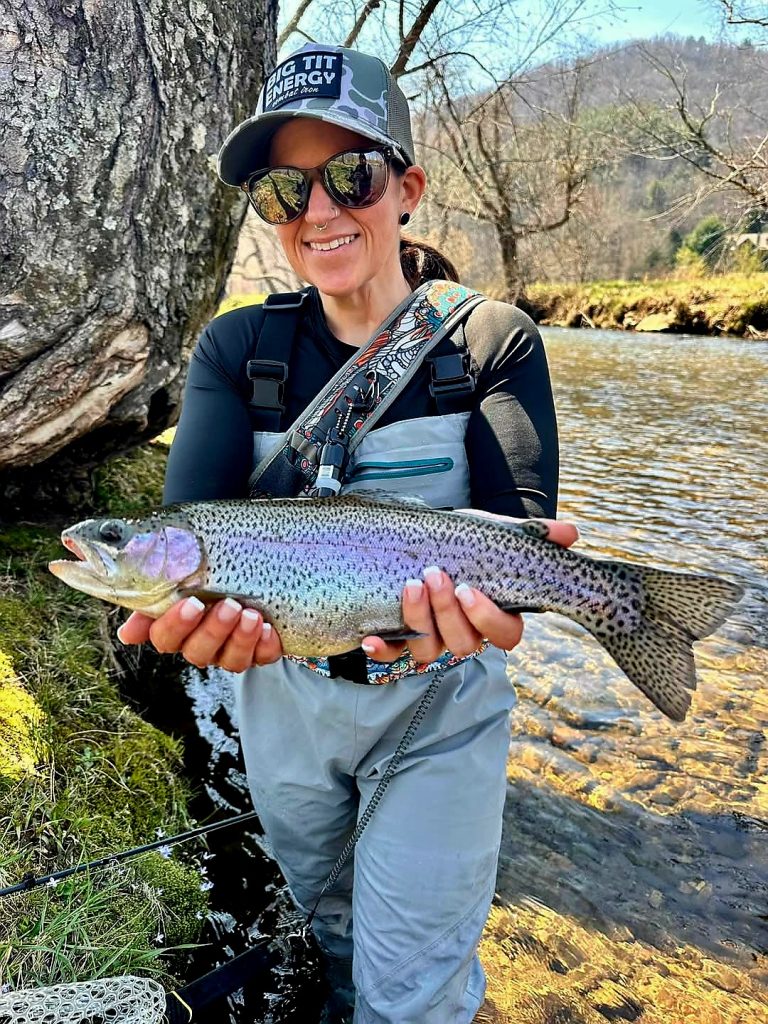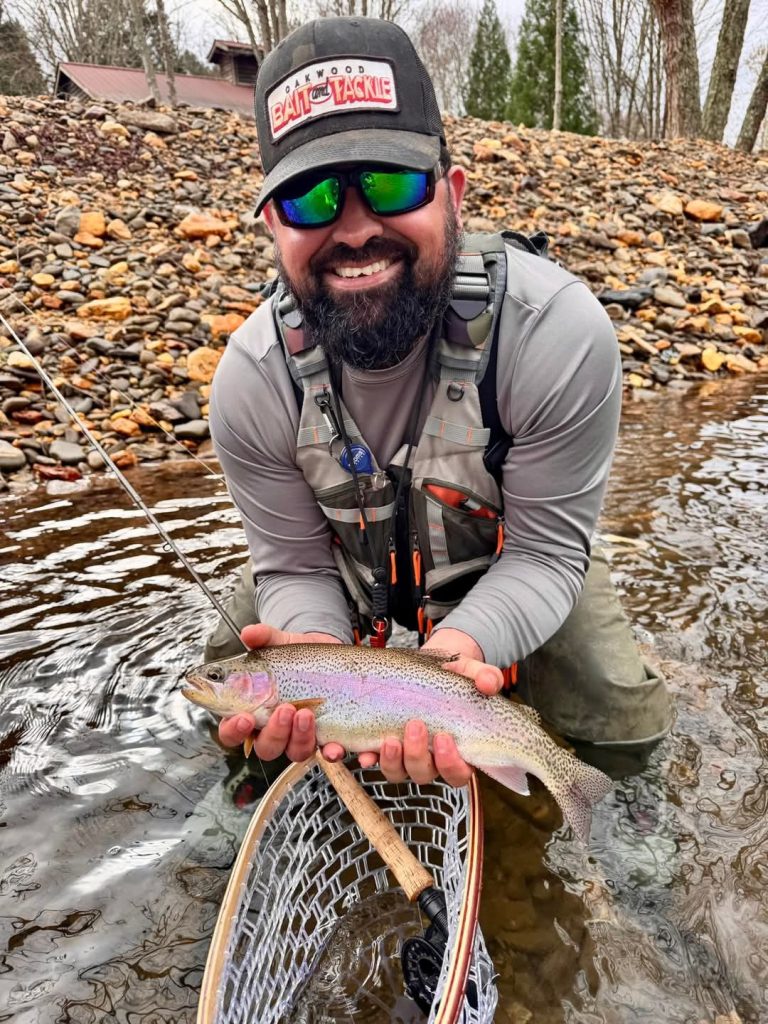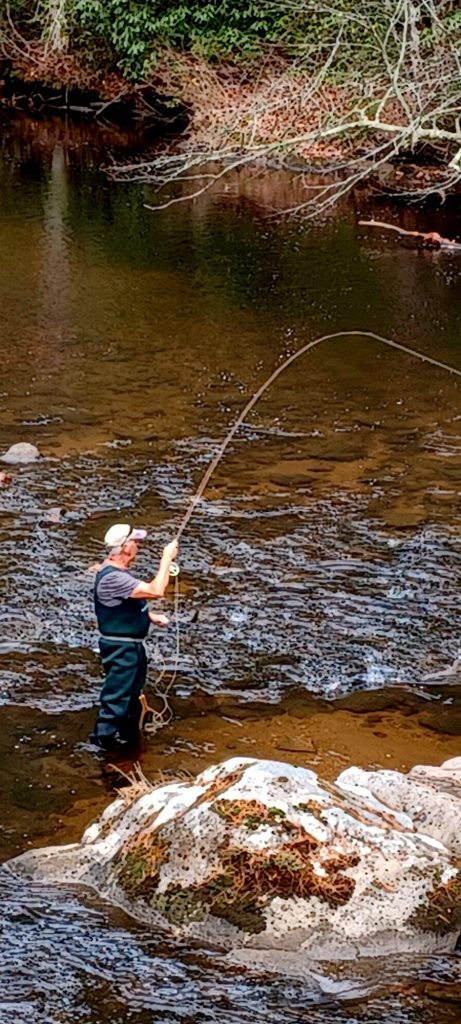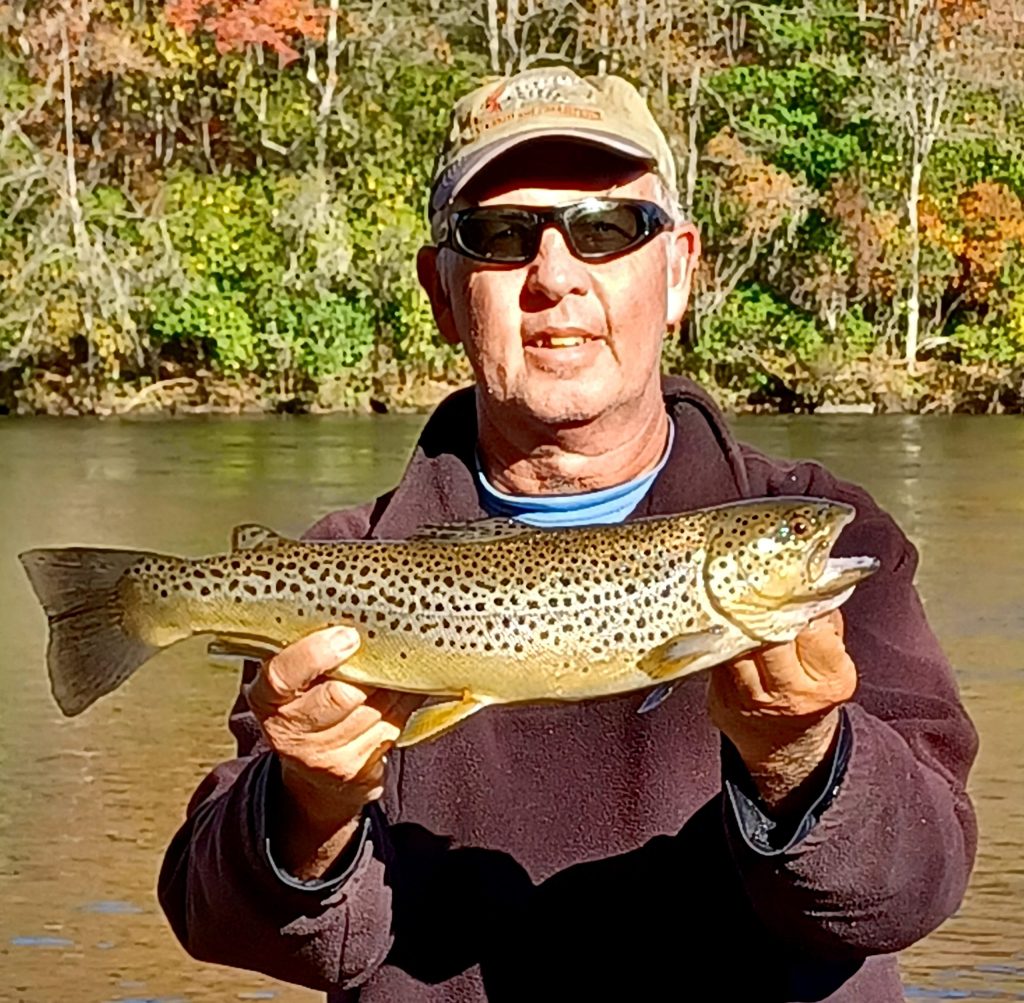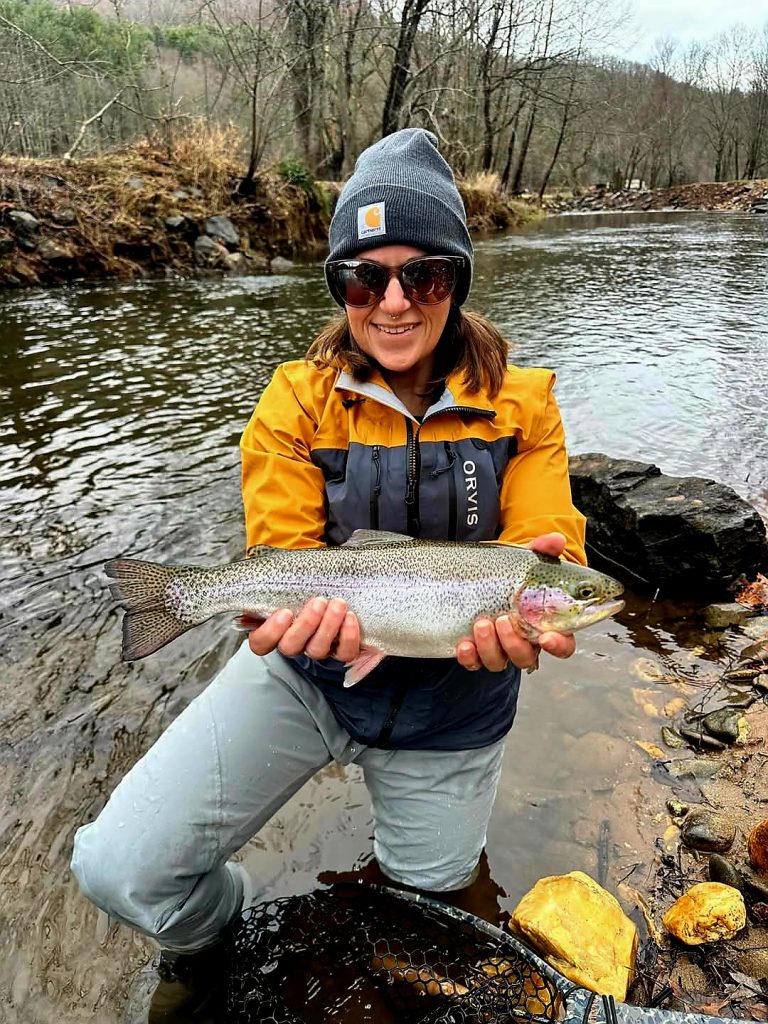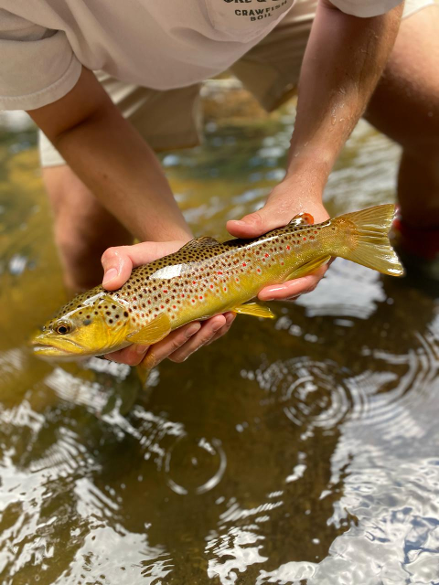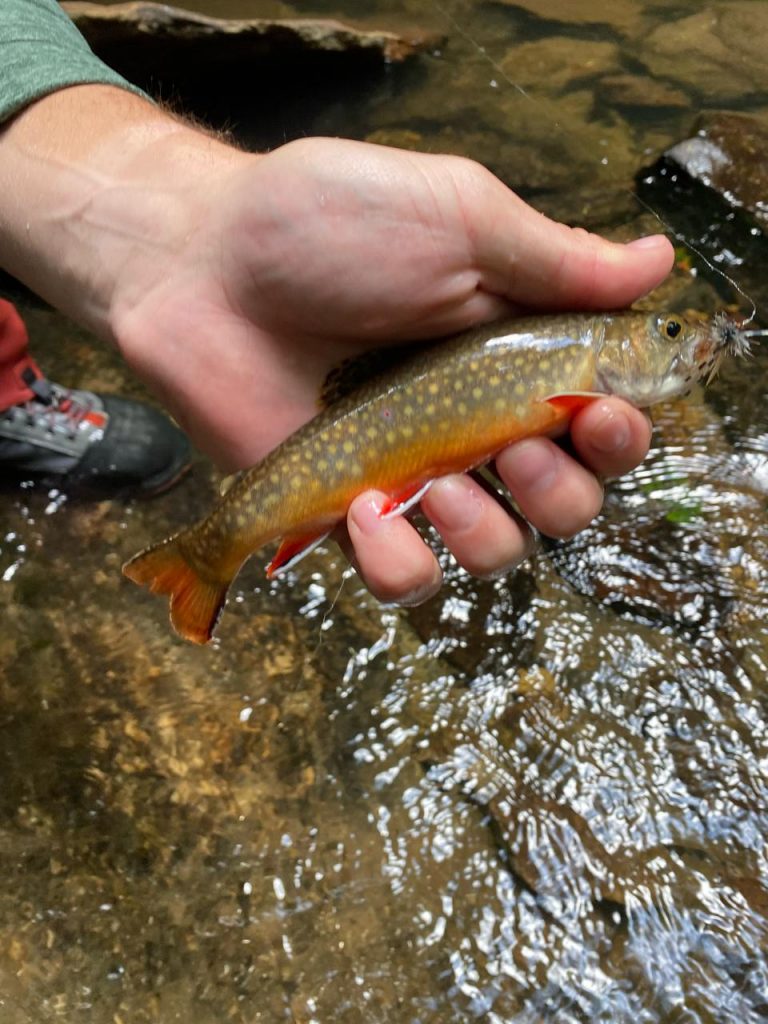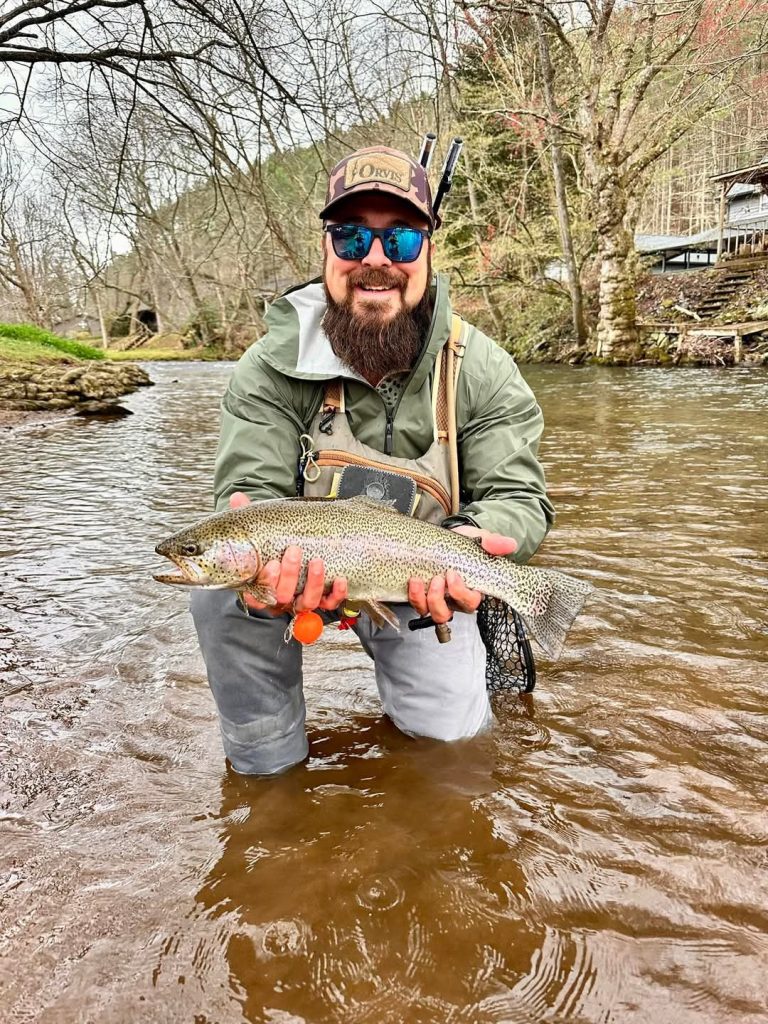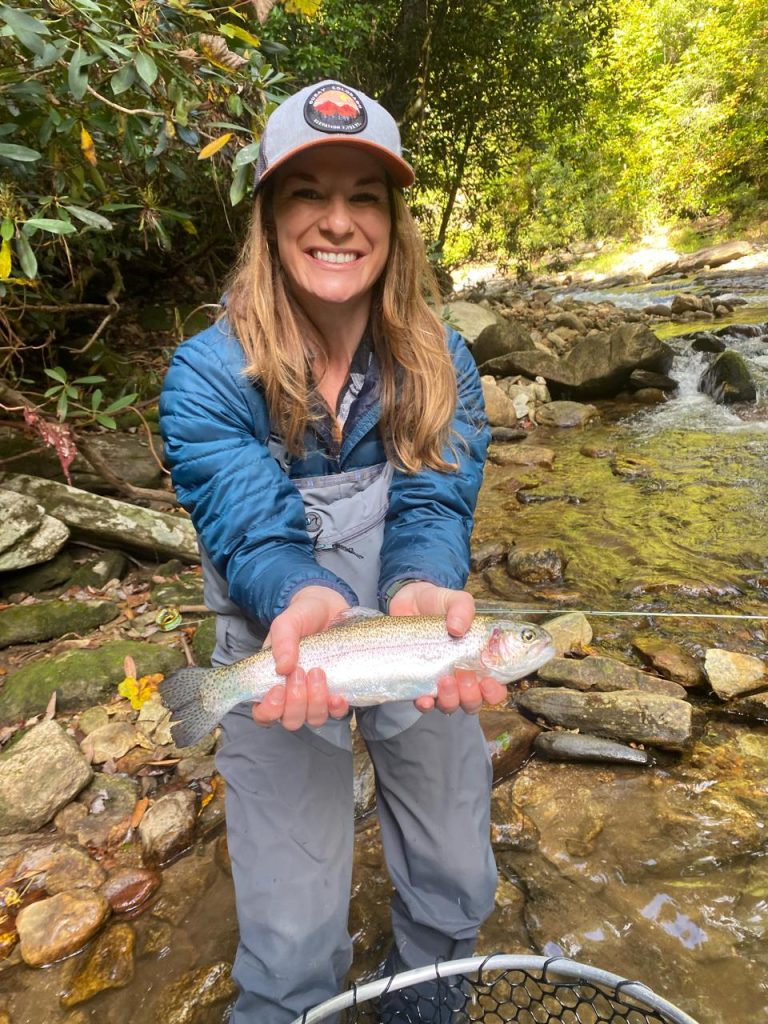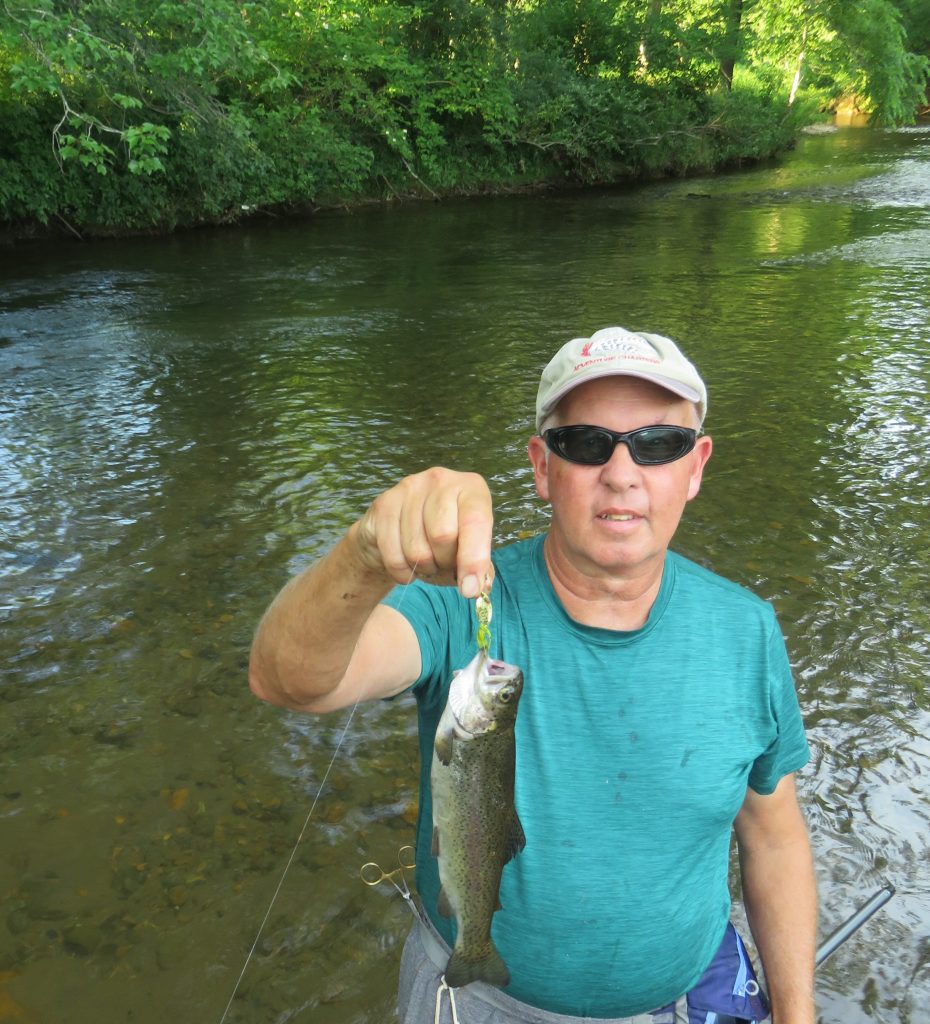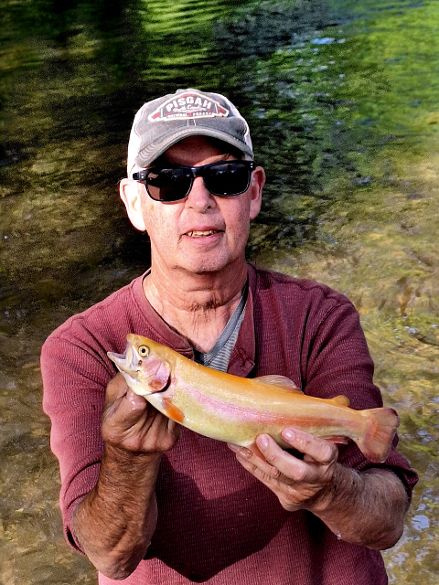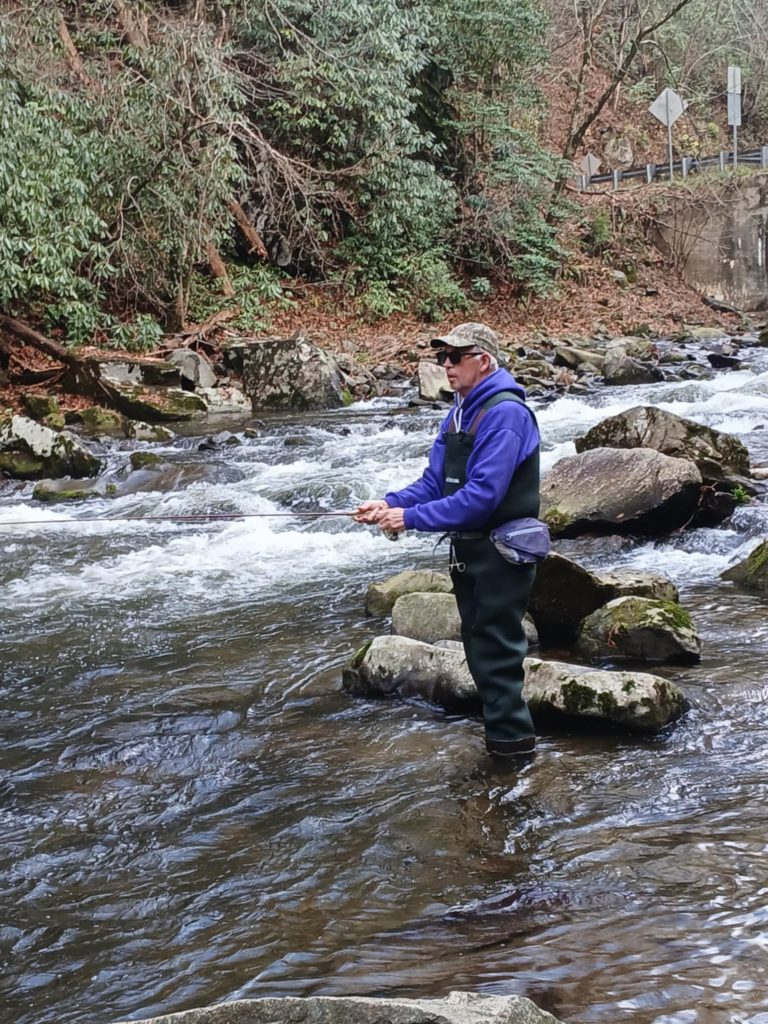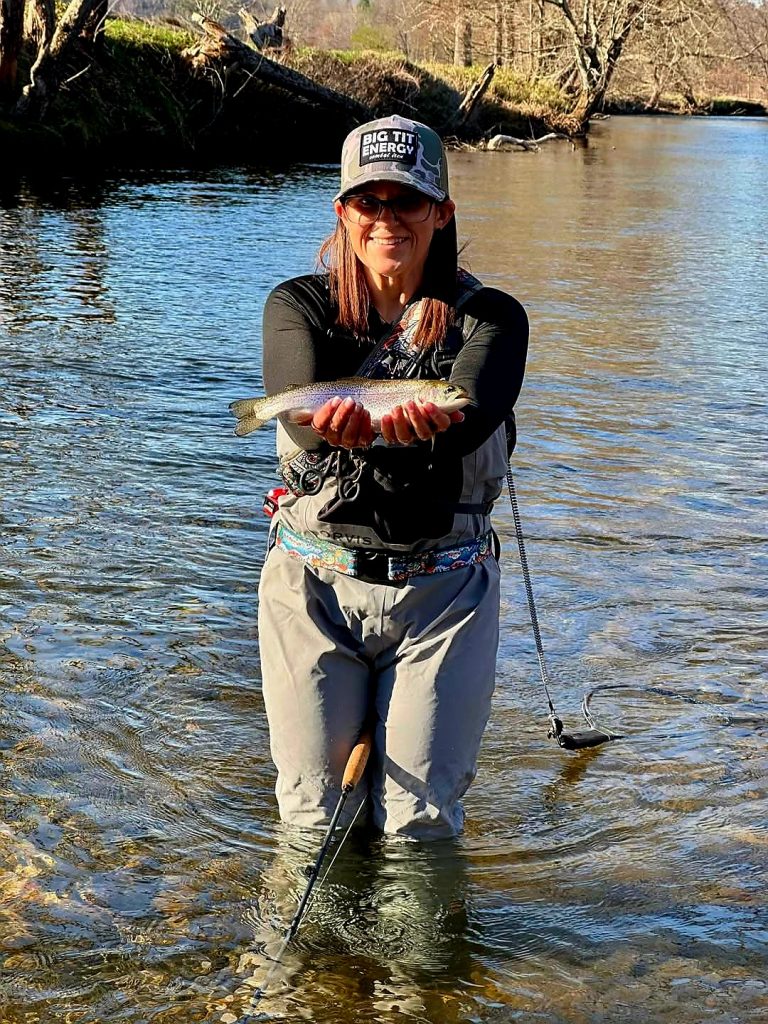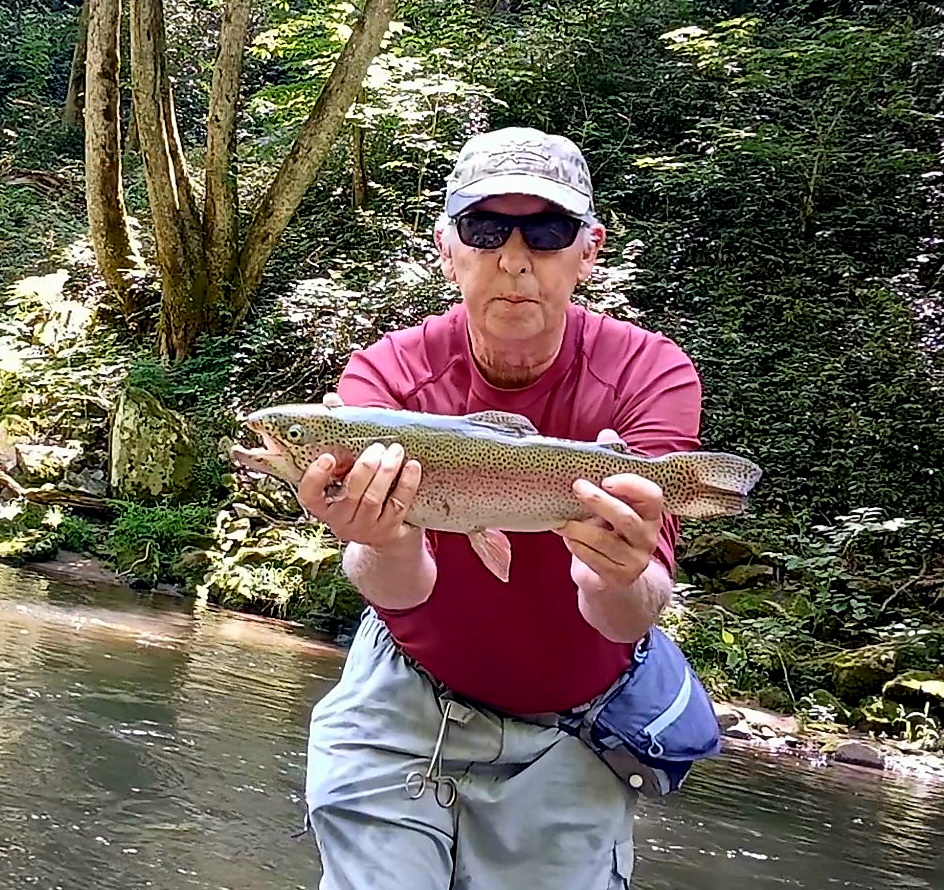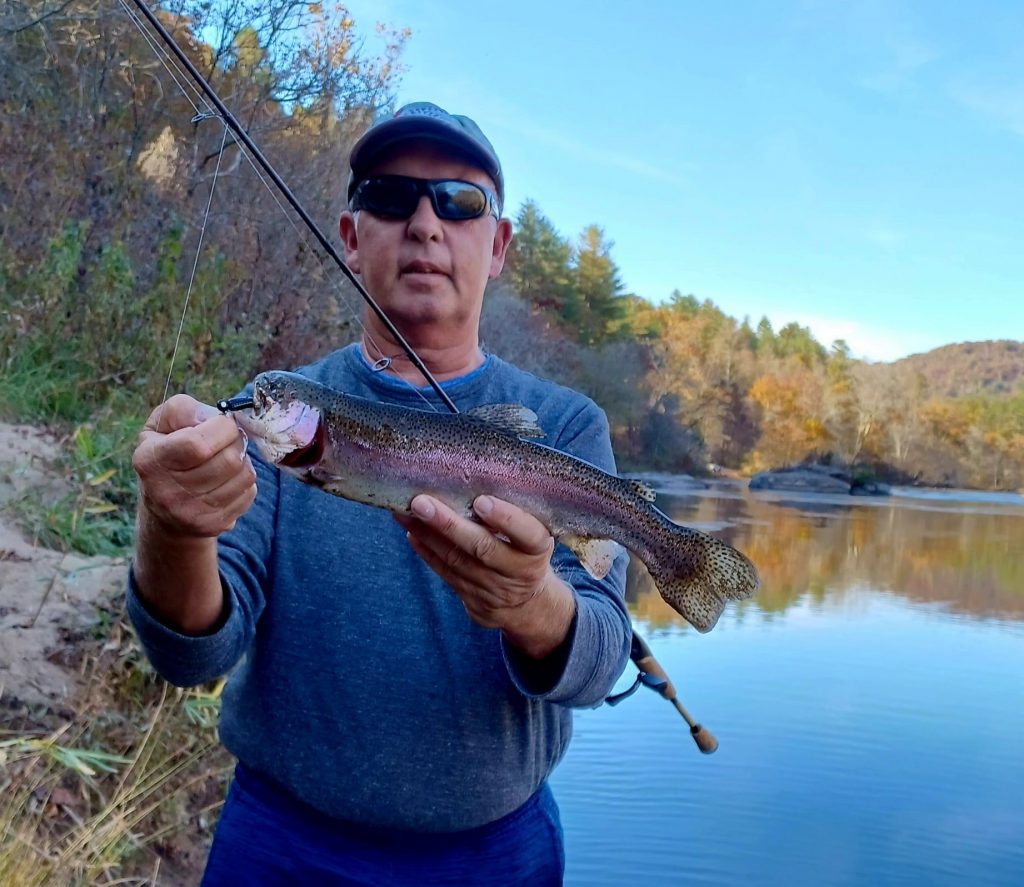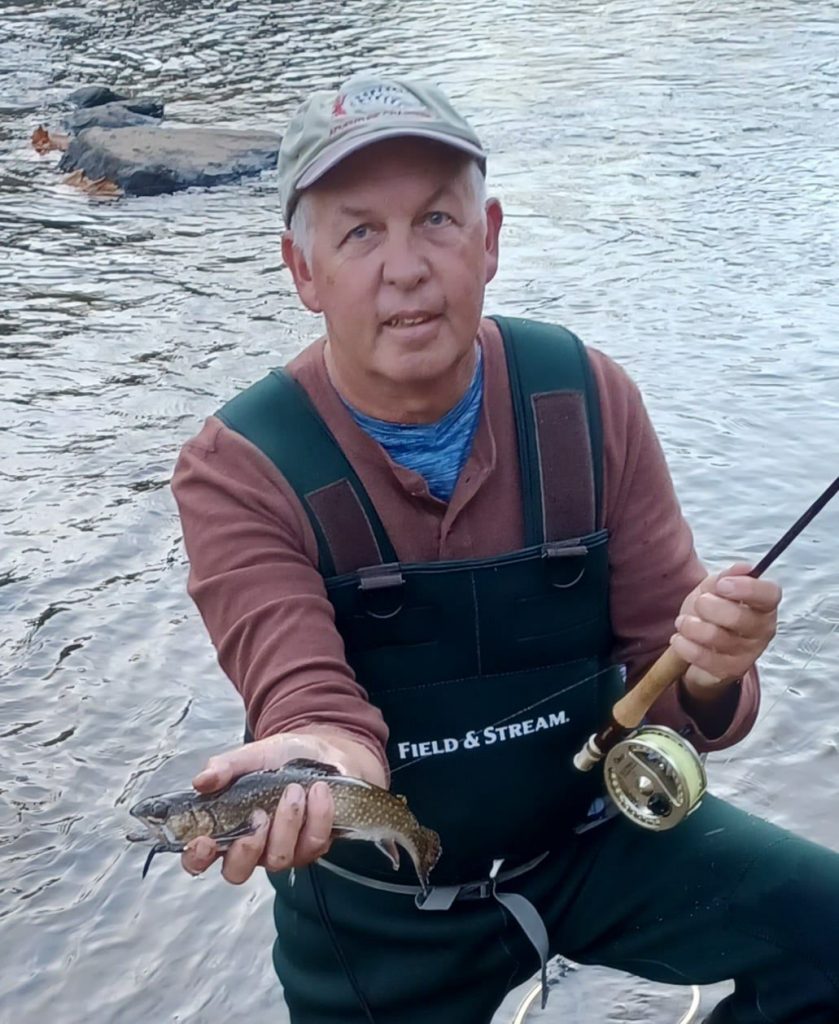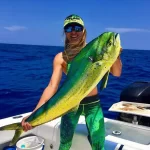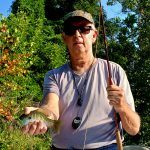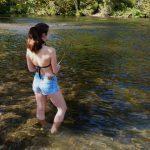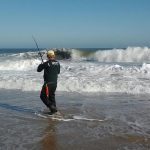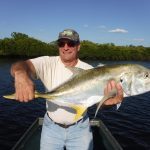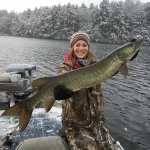Trout Fishing in Franklin North Carolina
This article will thoroughly cover trout fishing in Franklin, North Carolina. This is a fairly large area that offers anglers some outstanding trout fishing opportunities! For the most part, this includes the area of North Carolina, West, and southwest of Asheville. The techniques and tips offered in this article will apply to all of these waters.
Read my comprehensive article on fishing in Franklin North Carolina
All three of the major trout species are represented well in the waters of Western North Carolina. Brook trout are the only true native species and are found for the most part in the higher elevations. They are stocked by the state as well. Rainbow trout are the most widely dispersed species and are heavily stocked, with wild rainbow trout being available as well. Both native and stocked brown trout are quite plentiful.
Call Capt Jim at (941) 371-1390 or e-mail captjimklopfer@gmail.com
Trout fishing in Franklin, NC
As mentioned above, the three major trout species that anglers will encounter in the North Carolina mountains are brook trout, brown trout, and rainbow trout. Some streams will have populations of all three. Larger rivers such as the Tuckasegee River and the Nantahala River are perfect examples of this. While similar in habits, all three species are just a bit different.
Rainbow trout are the most widely available trout species in North Carolina. This is mainly due to the fact that they represent the vast majority of stocked fish. They are probably the most recognizable freshwater fish species. Rainbow trout are fairly adaptable and will do well in small streams, larger rivers, and ponds and lakes. Rainbow trout will take a wide variety of flies, lures, and natural baits.
Brown trout are often found in the same waters as rainbow trout. They tend to grow a bit larger in their diet often shifts to larger meals such as bait fish. Anglers targeting a trophy brown trout will do better to use a minnow imitating plug, large spoon, or large streamer fly. Brown trout can also tolerate fairly warm water. Anglers will encounter native, or non-stocked fish, but the majority will be stockers.
Read more about guided fishing in North Carolina
Brook trout may be the most beautiful fish species on the planet! Native brook trout are small but are beautifully colored. They are the only truly native trout species in North Carolina. While they are caught in larger streams, most anglers who are serious about targeting native brook trout do so in the smallest of streams at higher elevations. Smoky Mountain National Park has many miles of these types of streams.
Both wild and stocked trout are available
North Carolina has an excellent mix of both stocked (hatchery supported) waters as well as those with a good native fish population. It can be important to note the difference as these fish will behave differently. For the most part, stocked fish are easier to catch and will take a wide variety of lures and baits. Native fish on the other hand will be more selective. However, once stocked fish settle down into their new homes, they tend to behave more like native trout. This is especially true with what are called “holdover trout”, which are trout which have been stocked but not caught and kept and are allowed to live and grow in the stream.
Another aspect of trout fishing in Franklin North Carolina to consider is the amount of pressure a certain body of water gets. The Tuckasegee River is a perfect example of this. Due to its access and proximity to Atlanta and Asheville, it gets a lot of pressure. While heavily stocked, this type of pressure inevitably makes fishing more difficult after a while.
Anglers have a couple choices when deciding where to fish. They can fish the heavily stocked and pressured waters and probably experience some degree of success. They can also work a little harder to hike or way to spots that are less accessible and get less pressure. The third option is to hire a guide or go through an outfitter and fish private water. This latter choice can often result in fantastic fishing as the outfitter can limit and control the pressure on that particular body of water.
Trout fishing techniques
There are several different techniques that anglers can use when trout fishing in western North Carolina. The two major choices angler face are whether to fly fish for trout or use spinning tackle. Many choose the challenge of fly fishing for trout. This is both productive and rewarding. Anglers spin fishing can also do very well in this is perhaps an easier option for beginners. While some trout fishing is done in lakes, the vast majority of anglers chasing trout do so in streams and rivers.
One of the most important, and sometimes difficult, aspects of trout fishing in streams and rivers is understanding where trout will lie and how to present the offering to them. Some call this “reading the water”. In smaller streams, most trout will be found in the deeper pools between the riffles. This is often referred to as “pocket water”. The heads and tails of these pools can be excellent spots as well as the water speed changes. Experience is the best teacher.
Spin fishing for trout
Anglers new to trout fishing will probably have the most success in the beginning using spinning tackle. Chances are the average person is familiar with this type of tackle and perhaps already owns it. Many of the same lures and techniques used for other species will produce trout as well.
For the most part, this is a situation for ultralight spinning tackle. Most trout are not large, the average being around 12 inches long. Also, the waters that trout inhabit are often crystal-clear. For these reasons, anglers need to go as light as possible on the tackle in the line. A 6 foot to 6 1/2 foot ultralight spinning rod with a 1000 series reel spooled up with 4 pound monofilament line is an excellent all round combination.
Trout fishing with live bait
Anglers spin fishing for trout can opt for either artificial lures or natural bait. While I seldom fish with natural bait, it can be very effective, especially on stocked fish. The top live bait would be a live nightcrawler. However, just as effective and easier to use are the many prepared trout baits on the market. These store easily in an angler’s tackle box and are ready to be used at any time as opposed to purchasing live bait and keeping it alive.
The best approach to fishing with live or natural bait is a simple bobber rig. A small hook, I prefer a #8 bait holder live bait hook, is tied onto the line. A small bobber or float is attached to feet to 3 feet ahead of the hook, depending on the water depth. A tiny split shot weight may be required to get the bait down. This is a simple as fishing gets in this will catch plenty of Western North Carolina trout!
I prefer using artificial lures when spin fishing for trout. My number one lure by far is the in-line spinner. It is easy to use and is extremely effective on all three trout species. The 1/16 ounce Warden’s Original Rooster tail spinner is my personal favorite. It is very light and tends to hang up on the bottom last often than heavier spinners. Mepps, Blue Fox, and Panther Martin spinners are also quite popular and effective.
Anglers seeking larger trout will do well to throw a small jerk bait. As trout grow larger, they often switch their diet from bugs and insects to larger prey, which for the most part includes minnows. A 2 inch to 3 inch hard plastic jerk bait plug is extremely effective. It allows anglers to cover a lot of water in search of a trophy trout. I have personally caught a lot of my larger trout using jerk baits. My personal favorite is the #8 Rapala Husky Jerk and white, olive, or rainbow trout.
trout stream techniques
The best approach when using live or natural bait is to simply cast the rig up stream and allow it to float down naturally through a pool with the current. Trout will stage on drop-offs, ledges, and behind rocks and other structure. It is simply a matter of covering a lot of water and waiting for the float to go under. Anglers can adjust the depth of the bait by adding or removing a small split shot and sliding the float up or down.
Anglers casting artificial lures will do best to cast right across the stream and work the down stream portion of the area. Casting upstream will often result in a lot of slack in the line and the lure not being presented effectively. The strike often occurs at the end of the drift as the lure “swings” with the current. This technique works very well with spinners. Anglers can even cast straight down stream and just allow the current to provide action to the lure. Small spoons can be used as well.
In most instances, a slow steady retrieve works best. When using spinners, I like to twitch the rod tip sharply in the beginning to get the blade turning, then reel as slowly as possible to keep the blade rotating and flashing. In many cases, the current will provide all the action that is needed. When using jerk baits, I like to makes up a steady retrieve with a twitch and pause retrieve, especially in the slower deeper pools.
Fly fishing for trout in Franklin North Carolina
As mentioned earlier, many anglers associate trout fishing with fly fishing, and for good reason. It is the classic and quintessential way to catch a trout. Many books have been written on the subject! In this article, I will cover the basics in hopes of simplifying the tackle and techniques for anglers interested in giving it a try. It really is not that difficult to learn to cast and catch a trout on a fly rod and once an angler does, he or she is often hooked for life!
The main difference between a fly fishing and spin fishing is that in spin fishing the weight of the lure or bait provides the impetus for casting distance and the line just follows behind. In fly fishing, the opposite is true. The line provides the weight in the casting distance and the fly, which weighs nearly nothing, follows behind.
Fly rods, lines, and leaders
Fly rods, reels, and lines are designated by “weight”, shown as “wt”. The smaller the number, the lighter the rod and line. The line must be matched to the rod, otherwise it will be difficult to cast. These components are all matched to work together. For most trout fishing in western North Carolina, a 5wt outfit is perfect.
Just to confuse things a bit, there are many choices when it comes to choosing the fly line as well. There are different tapers that can be purchased, depending on the use. In the majority of situations a double taper floating trout line works best, especially for beginning anglers. This results in a delicate presentation and easy casting.
The final component is the leader and fly. Fly line is relatively thick and very easy for a trout to see. Therefore, a leader is used to connect the fly line to the fly. These leaders are tapered, which means they are thicker at the fly line section then where the fly connects. Leaders are designated by a number followed by an x. The higher the number, the lighter the leader. A 9′ 5x leader is a good all-around choice, though in clear water with spooky fish, anglers may have to go even lighter.
Best trout flies
Fly selection can be very intimidating! Serious trout anglers are often educated and the science of entomology. However, anglers just getting into the sport can do well with just a handful of flies. Flies can be broken down into three categories; dry flies (which float on the surface), streamers (which are worked below the surface and often imitate minnows or larger prey), and nymphs (which mimic all types of very small subsurface aquatic insects).
When possible, most anglers fly fishing for trout would prefer to catch them on a dry fly. As in all fishing, anytime a visual element can be added, the excitement is increased. Also, it is easier to detect the strike on a drive fly as the take is readily seen when a trout eats. Top dry flies for trout fishing in western North Carolina are; yellow Sally’s, parachute Adams, stimulators, elk hair caddis, and chubby Chenobyl
Dry flies are usually cast out upstream and allowed to drift through a likely spot. It is very important that the fly is allowed to drift naturally. Often times, the current will catch the fly line and drag the fly. This seldom results in a take. Instead, anglers “mend” the line by twitching the rod tip and adding some slack. This allows the fly to drift naturally through the pool or riffle.
Subsurface trout flies
Streamers are worked below the surface and often catch larger trout. They can be tied to mimic a wide variety of forage including minnows, crayfish, and other larger aquatic prey species. Streamers are best worked across current and downstream. Just like with spinners, the take often occurs when the line tightens up at the end of the drift and swings across. Top streamers are a #8 black or olive Wooly Bugger, #6 Muddler Minnow, Sculpzilla, Sparkle minnow, mini sex dragon, and Dahli Lama,
Nymphs catch a lot of trout in Franklin North Carolina and all over the country! These tiny flies do not look like much, but very realistically mimic the majority of prey that trout feed on. The take can be very difficult to feel, especially for the novice angler. Therefore, a nymph is often fished under a “strike indicator”. This is an all reality just another bobber. The strike indicator suspends the fly at the perfect depth depending on the water being fished.
Anglers often fished multiple flies under a strike indicator. This presents different fly patterns at different depths, increasing the chances for a take. The only downside to this is that tangles can occur more easily when casting. Experienced anglers will also fish a nymph under a dry fly. This is an excellent approach as it gives anglers a visual when a trout takes the nymph as the drive fly in essence becomes the strike indicator while still offering the opportunity for a trout to take the drive fly on top.
My preferred rig for nymph fishing is a double nymph rig under a strike indicator. A Pat’s rubber geg is the top fly with another nymph underneath. These are soft hackle pheasant tail, Walt’s Worm, Duracell jig nymph, and English pheasant tail.
Best trout waters in and near Franklin North Carolina
Now that we have the proper gear and an understanding of techniques and trout locations, it is time to actually go fishing! North Carolina offers both resident and visiting anglers a wide variety of trout fishing opportunities. In the following section, some of the best trout fishing waters will be covered. It would be impossible to list them all.
In my opinion, the best resource for anglers fishing new and unfamiliar waters is a local fly shop or outfitter shop. Most of the people working in the stores are dedicated trout fishing anglers themselves and are friendly and willing to help. They will be on top of the current stream conditions as well as the best fly patterns and other great local information. In Franklin, that means Fish Tales Outfitters.
A quick word about stream conditions; this is a crucial aspect of trout fishing in western North Carolina and really all over the world. Successful anglers will change their plans based on stream conditions in order to maximize their chances of success. When the water is high, fast, and dirty, trout fishing is not only very difficult but even dangerous. When the water is low, slow, and clear, it can be very difficult to get a take. Again, local shops are excellent resources for this information.
Trout water designations
The trout fishing regulations in western North Carolina can be a bit confusing. There are four basic designations; hatchery supported waters, delayed harvest waters, catch and release waters, and mountain trout waters. Adding to the confusion is the fact that some rivers and streams have different designations along the same body of water. For the most part, these waters are posted with diamond shaped signs designated the type of water that an angler is fishing.
Basically, hatchery supported waters are stocked waters were anglers can use any fishing technique. Delayed harvest waters allow for catching release fishing with fly and single hook artificial only for a certain time after which fish can be harvested. Fly fishing catch and release only waters are self-explanatory. Mountain trout waters are non-stocked waters with their own size and bag limits.
Trout fishing in lakes
While most anglers choose to pursue trout and flowing streams and rivers, lakes certainly hold plenty of trout as well. In fact, some of the largest trout caught in the state will be done so in larger lakes. The reasons for this are that trout have plenty of room to grow and there is often an abundance of forage. For the most part, anglers will be catching brown and rainbow trout, brook trout are seldom caught in these large rivers.
I think it is fair to say that the vast majority of trout caught in lakes are done so by anglers trolling. While this is not personally my favorite technique, it’s hard to argue with the simple math. Anglers trolling can present multiple lures at multiple depths in search of fish over a wide area. Spoons are excellent lowers and anglers can add clip on weights to get them to the desired depth. Plugs with lips on them are very effective as well.
Anglers casting flies and lures can also catch trout in lakes. The best spots to do so are places where feeder streams and small tributaries enter the larger lake. The spots will have current which trout love as well as an influx of water that is often cooler. Both of these factors will attract trout. The same flies and lures that work in streams will produce trout in lakes as well.
Trout waters in and near Franklin North Carolina
The far west portion of North Carolina where it tapers down to a point offers anglers some excellent trout fishing opportunities! Anglers can choose from a myriad of tiny creeks, medium-sized streams, and larger rivers. All will hold trout at certain times of the year. Franklin is right in the center of this area, there are a lot of trout fishing options within an hour drive.
Franklin is where I own my North Carolina summer home. While it does not get a lot of press, there are several good opportunities for anglers seeking trout without having to travel very far.
Cullasaja River
The western part of the Cullasaja River is hatchery supported. It is fairly accessible off of River Road and off of State Road 64 and offers fairly easy wading in good fishing. Anglers can catch smallmouth bass and other species there as well. Anglers who enjoy a bit more of a challenge can choose to fish the Cullasaja River in the Gorge section just west of Highlands. The river itself along with several smaller tributaries offer anglers a really good chance at native trout. The section from Turtle Creek Road to Goldmine Road is heavily stock and is more accessible. Anglers can also choose to fish Glenville Lake as well as Bear Creek Lake and Wolf Creek Lake, all of which are a short drive away.
Cartoogachaye Creek
Cartoogachaye Creek flows west and also empties into the Little Tennessee River. It is hatchery supported from the State Road 64 bridge to the mouth of the river. It is fairly accessible in a couple spots, including the Parker Meadows complex, off of industrial Road, and as well right in downtown Franklin off of the Greenway and Veteran’s Park. It is a surprisingly good “urban” fishery that gets overlooked.
Little Tennessee River
While the Little Tennessee River is considered a mostly smallmouth bass fishing stream, I have caught some of my largest trout in it. The best section of the river to fish for trout is from burning town Creek North towards Fontana Lake. Several tributaries to the Little Tennessee River including Burningtown Creek (hatchery supported) and Tellico Creek (there is a trout farm upstream trout often escape into the creek in the river) will also hold trout.
Burningtown Creek
Burningtown Creek is a pretty little stream that runs 20 minutes northwest of Franklin. It gets stocked fairly heavily into July. It is a great option when other streams are high and muddy.
Hayesville
The top spots in Hayesville are the Hiwassee River and Fire’s Creek. Fires Creek is a beautiful little stream with an excellent park and access. It also has a delayed harvest section. While readily accessible, due to the fact that it is not near a larger town results in a bit less fishing pressure and some other spots. The Hiwassee River is a tale water fishery from Lake Chatuge. It can be good but water levels fluctuate greatly and anglers waiting or boating need to be very careful.
Tuckasegee River
The Tuckasegee River is a beautiful little river that is fairly easy to fish, though anglers waiting need to be careful when the water is up a bit. It has a long delayed harvest section as well as a hatchery supported portion. There is excellent access off of River Rd., Route 107, and other side roads. There are multiple parks for put in and take outs of drift boats which of course anglers waiting can use to access the river as well.
This River gets a LOT of fishing pressure! This is especially true in April and again in October when the river is stocked. The Tuckasegee is heavily stocked and the number of trout per mile rivals just about any river in the country. Despite the pressure, there are so many fish that persistent anglers will certainly achieve success.
Any tributary that enters the river is likely to hold trout as well. Scott Creek is hatchery supported and is very accessible throughout its length. It does get a fair amount of pressure as well, mostly due to the ease of access. However, it is a very easy creek to fish and wade and is an excellent choice for novice anglers or those who are a bit less active.
This is also pretty much the epicenter of the North Carolina fly fishing trail. This is a list of top streams along with access points. Click the link to read more about the North Carolina fly fishing trail.
Bryson City and Cherokee
Bryson City is considered by some to be the trout fishing capital of North Carolina. It is an excellent spot use as base camp for any trout fishing adventure. The Tuckasegee flows right through the middle of town and has excellent access from a couple of parks. Feeder creeks such as Deep Creek (which has excellent access and some nice parks) are productive as well.
Just to the north and east is the town of Cherokee. The waters within the reservation are a bit unique. Anglers fishing the Ravens Fork and on the Oconolufty River along with its tributaries need to purchase a special permit for $10 a day. However, a North Carolina state license is not required.
Bryson City is also called the gateway to the Great Smoky Mountains national Park. In the park there are endless miles small streams that hold native brook trout along with rainbow and brown trout. Adventurous anglers can explore these little streams. This is often referred to as “blue lining” due to the way they appear on a map. Brook trout are small, but extremely beautiful and often very aggressive as there is not a ton of forage in these little streams. Light rods are definitely the way to go.
Nantahala River
The Nantahala River runs through a beautiful gorge flowing out of Nantahala Lake in western North Carolina. It is considered by many to be the best trout fishery in the state and is on the list of the top 100 trout streams in the United States. The scenery is gorgeous and the fishing can be fantastic. There is a hatchery supported section as well as a delayed harvest stretch. It is a tailwater fishery with an unusual feature, the fast-moving water release from the dam actually starts several miles downriver from a big pipe.
This river gets a ton of use, despite its remote location. Anglers visit in the spring and the fall when the river gets a lot of stocked fish put into it. In the summer time, anglers will have to dodge rafts and float tubes as white water enthusiasts come to enjoy the river in the warmer months. The section of the river upstream from the lake is very technical and has a lot of wild trout. However, most of the land is private and access is very limited. Anglers can fish it near the Standing Indian campground.
Top trout fishing lakes near Franklin North Carolina
Anglers who prefer fishing in lakes have options as well. The high mountain lakes to the east all have good trout numbers. Glenville Lake, Bear Creek Lake, Wolf Lake, and Cedar Cliff Lake are examples. Fontana Lake and Chatuge are huge lakes that have more bass, but do have trout as well.
In conclusion, this article on trout fishing in western North Carolina will help anglers understand the myriad of options that are available to them in the information included will hopefully result in some productive fishing!
